Building a strong core often leads to a familiar routine of go-to ab exercises. However, even well-intended repetitions can fall prey to subtle form errors that sabotage your efforts. Surprisingly, even working your abs using a rowing machine demands certain limitations that will not abuse your spine.
These missteps don’t just compromise your gains; they can even lead to pain or injury if unchecked. If side planks fail to ignite your core or leg raises leave your back aching, it’s time to revisit your form and unlock the true potential of each set. Dive in as we expose the common pitfalls in popular ab exercises and guide you towards effective and pain-free execution.
By refining your form, you’ll ensure every rep delivers maximum impact, transforming your core workout from mindless repetition to targeted sculpting. This deeper understanding will not only optimise your results but also safeguard your body from unwanted strain. Get ready to unleash the full potential of your core routine, one corrected exercise at a time.
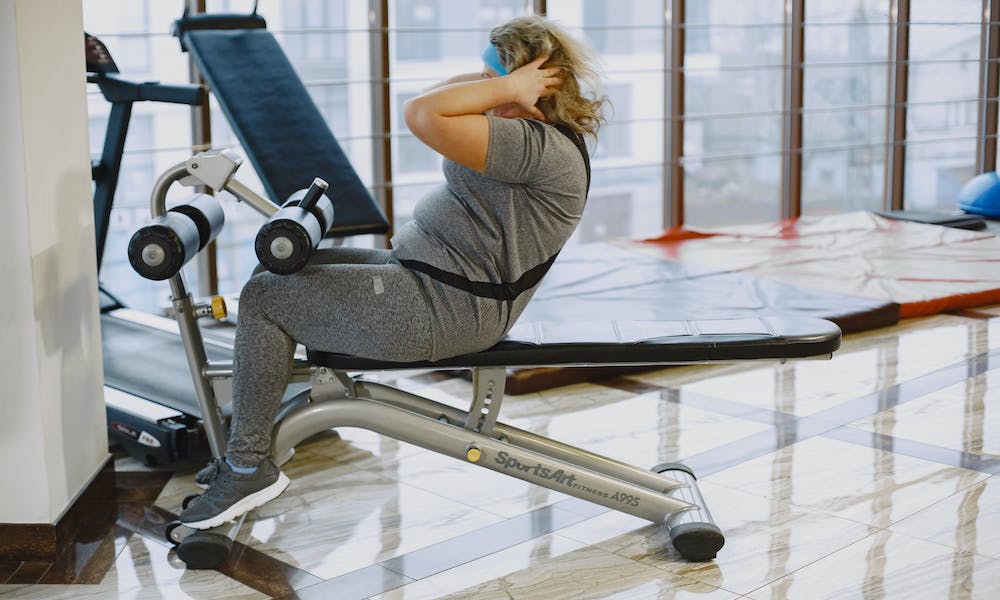
1. Doing Sit-ups and Crunches
While traditional sit-ups and crunches remain familiar core-strengthening exercises, recent research unveils potential risks associated with their impact on spinal health. The National Spine Health Foundation reports that sit-ups can generate up to 3,300 N of compression on the spine, significantly exceeding healthy levels. This, coupled with the repetitive nature of the movement, can contribute to higher injury rates.
In contrast, planks minimise submaximal microtrauma – microscopic tissue damage leading to inflammation – often caused by repetitive loading in the lumbar spine during sit-ups.

2. Planking
The plank reigns supreme as one of the most effective abdominal exercises, but poor form can turn this powerhouse move into a potential spine saboteur. The main reason is an arched back. This common misstep disengages your core, hindering progress and opening the door to lower back pain. Over-arching strains the lumbar vertebrae and shifts weight to the shoulders, compounding the risk.
The solution lies in building core strength gradually. For beginners, start with a modified forearm plank on your knees. Tuck your tailbone and engage your abs to draw your navel towards your spine. Once mastered, progress to a full forearm plank or high plank, maintaining a neutral spine and engaged core. Resist the urge to sag into your back or dump your weight onto your shoulders.
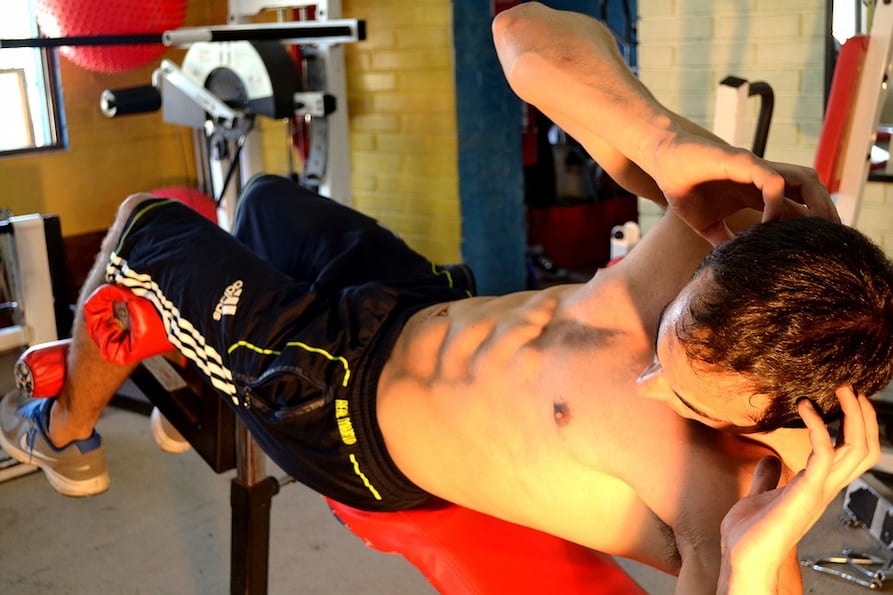
3. Russian Twist
While designed to sculpt your obliques, the Russian twist can easily become an arm workout in disguise. The key to mastering this move lies in torso rotation, not arm swing. Focus on engaging your internal obliques by fully twisting your torso with each side turn, ensuring your shoulders, not just your arms, are leading the movement.
Maintain a 45-degree lean without rounding your back, keeping your core active throughout. By refining your technique, you’ll unlock the true potential of the Russian twist, transforming it from arm flailing to oblique targeting, shaping your core with every twist.
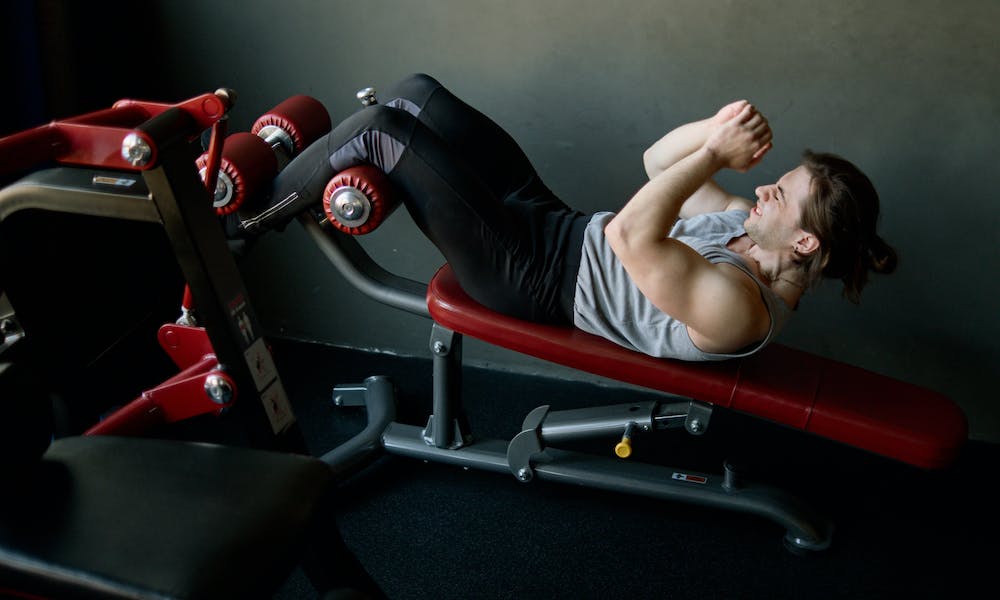
4. Crunching
Tucking your chin during crunches is a tempting shortcut, but it comes at a steep price. This common mistake strains neck vertebrae, hampers breathing, and bypasses your core, essentially rendering the exercise ineffective.
To maximise crunches and protect your neck, ditch the chin pinch. Opt for light head support with fingers by your ears, elbows out. Alternatively, cross your arms over your chest with a neutral chin lift. For extra control, imagine a gentle “push-pull” between your fingers and head. This activates core muscles while stabilising your neck, transforming crunches from spine stress to targeted core sculpting.
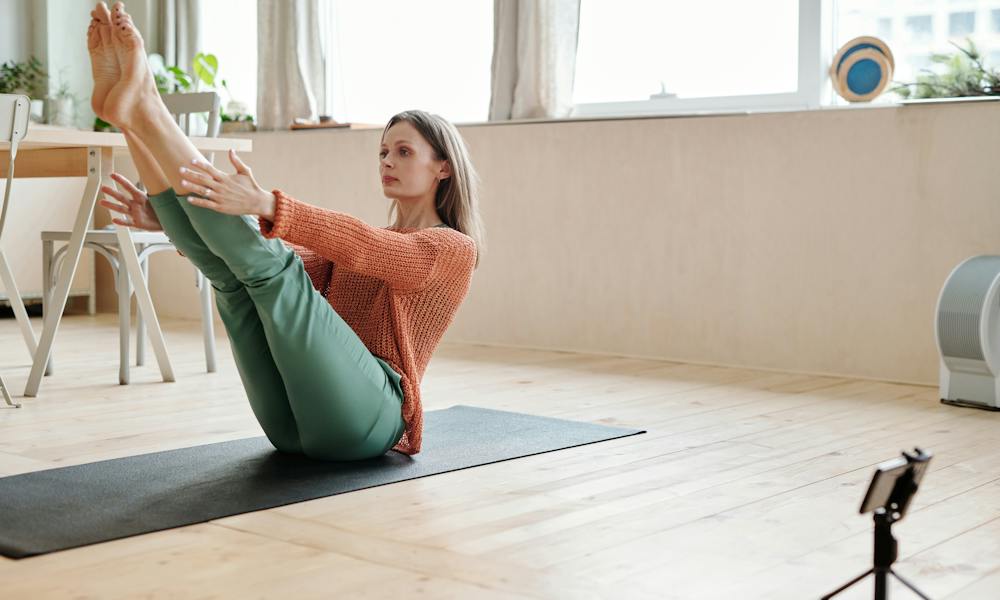
5. Leg Raise
The allure of lowering your legs further in leg raises often leads to a dangerous dip in the lower back. This not only undermines the exercise’s effectiveness but can also pave the way for sciatic pain. It’s a double whammy – your abs miss out on the targeted engagement, while your spine bears the brunt of the strain.
For a stronger, safer approach, prioritise a flat back throughout the movement. When your legs reach vertical, actively press your lower back into the floor. As you initiate the descent, maintain this connection with the ground, stopping any hint of arching the moment your back loses contact. This may shorten your range of motion initially, but it ensures proper core engagement and protects your vulnerable spine.
It’s quality, not quantity, that reigns supreme, and a controlled leg raise with a stable back will work your transverse abdominis – the deep core muscle – significantly more than a compromised rep.

6. Side Planking
The allure of a high side plank is undeniable, but beware of the shoulder slump! Leaning your shoulder away from your palm might seem subtle, but it translates to big trouble – both pain and a weakened stance. This misalignment compromises the critical stacking of your joints, robbing you of essential stabilisation.
Instead, imagine your body as a stack of sturdy blocks, your shoulder directly above your elbow like a key piece aligning the structure. This stacked alignment, achievable even in a forearm side plank, is the foundation for a pain-free, effective hold.
Start with the modified posture if needed, holding for 30 seconds. As your core strengthens, gradually progress to the high side plank, savouring the stability and power that proper alignment unlocks.
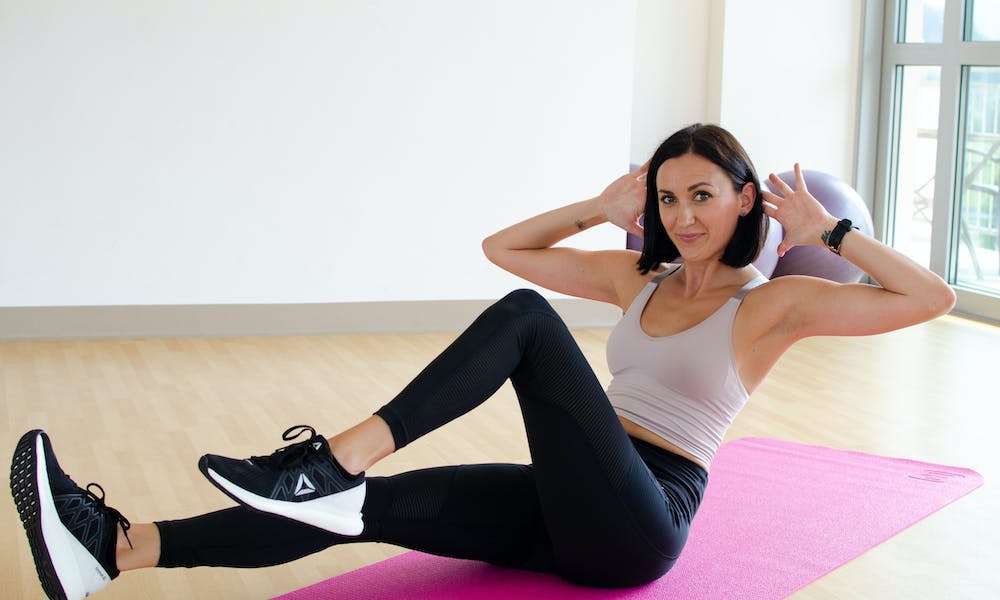
7. Bicycle Crunches
The tempting pace of bicycle crunches can often lead to a flurry of movement that bypasses your abs. Remember, core engagement thrives on control, not speed. Chasing reps can compromise form, leaving your shoulders glued to the floor and your torso rotation incomplete.
Instead, embrace a slower, more mindful approach. Focus on lifting your shoulders off the mat, fully extending the opposite leg, and deliberately twisting your torso with each pedal. This deliberate pace allows you to truly connect with your core muscles, maximising the burn and reaping the full benefits of this effective exercise. Embrace the slower tempo – your abs will thank you for it.
Why Does My Spine Hurt When I Work Out?
Blame it on faulty form. Improper posture strains back muscles and ligaments, putting pressure on your spine and joints. This can lead to alignment issues, even fractures or dislocations. Focus on proper form to avoid pain and stay injury-free.
How Do I Know if I Hurt My Spine or Muscle?
Muscle pain and disc problems can cause back pain, but the feeling is different. Muscle pain is usually dull and achy, like post-workout soreness. Disc pain can be sharp, tingling, or radiating, often feeling more intense and debilitating.

How Do I Manage Back Pain?
While back pain can be a daunting hurdle, the latest research paints a clear picture: controlled exercise is not the enemy, but a powerful ally in its management. A review of medical recommendations in “Exercise in the Management of Chronic Back Pain” reveals a global consensus – more, not less, activity is key to recovery and pain relief. This isn’t just theory; physical therapy hinges on exercise to improve function.
The key lies in a “pragmatic” approach, as the medical reviewers emphasise. This means following a principle of progressive overload, where exercise intensity, frequency, or duration gradually increases to drive improvement. This consistent approach, now widely recommended, not only helps prevent back pain but also reduces its impact on existing conditions or injuries.
Bottom Line
The next time you hesitate before picking up a weight or tackling a new exercise, remember the word pragmatic. The risk of back pain from overdoing it or neglecting proper form simply isn’t worth it. Invest in learning safe and effective techniques, and unlock the power of exercise to manage your back pain and move confidently forward.